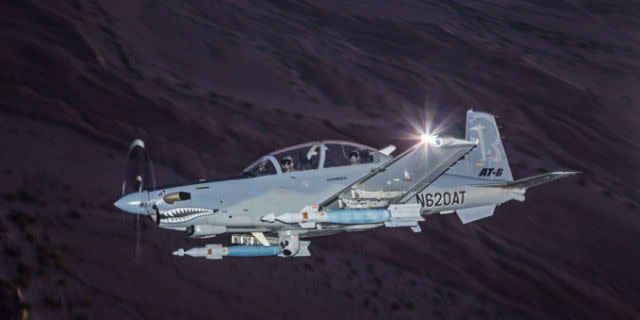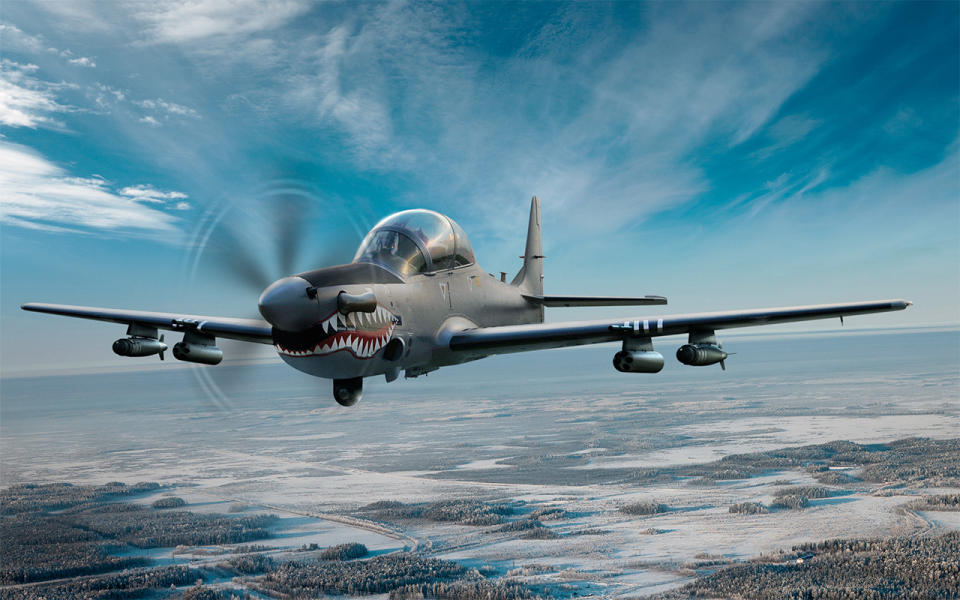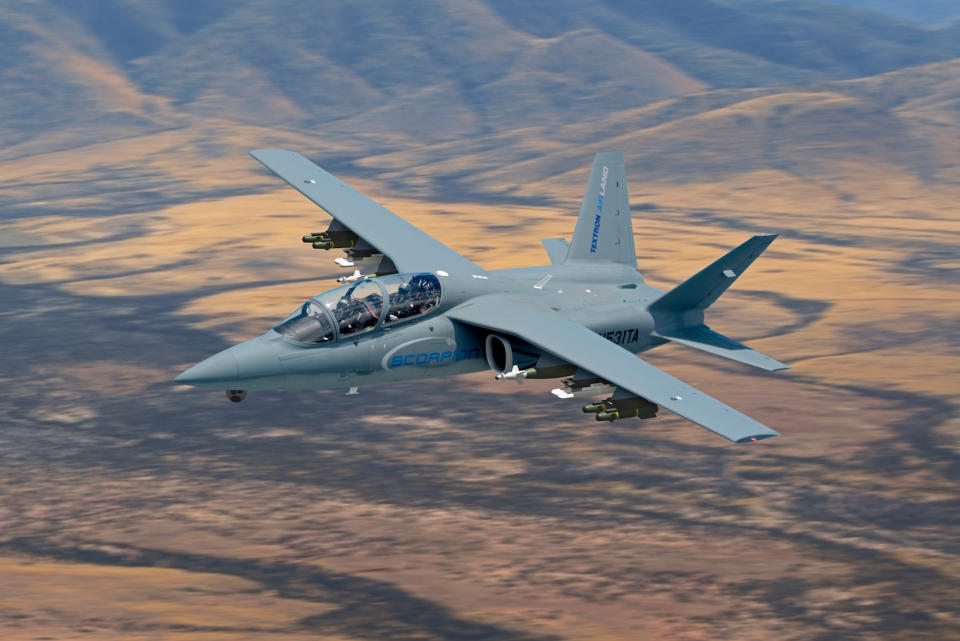One of These Three Light Attack Planes Could Help Replace the A-10

The Air Force has chosen three aircraft designs to participate in a series of demonstration flights this summer, and one of them could be selected for a new light attack aircraft to serve as a partial replacement for the A-10 Warthog. The Air Force hopes the OA-X program will lead to smaller, lighter airplanes capable of providing air support in low-threat conflicts.
The three planes-the Sierra Nevada/Embraer A-29 Super Tucano, Beechcraft AT-6 Wolverine, and Textron Scorpion-will fly this Summer at Holloman Air Force Base in New Mexico. The OA-X, or "Observation, Attack, concept," envisions a small, nimble airplane that can carry a large payload of sensors and weapons. Flown by a pilot and copilot/observer, the small plane could carry out strike and close air support missions in support of ground troops.
OA-X is seen as half of a two airplane solution for eventually replacing the A-10 Thunderbolt. OA-X is a smaller, cheaper plane that would thrive where the air defense threat is limited to shoulder-fired missiles and machine guns. Another key requirement is that the plane be cheaper to fly per hour than the F-35 Joint Strike Fighter or A-10. The F-35 costs a whopping $42,000 an hour to fly, while the A-10 costs $17,000 an hour. The Air Force envisions the OA-X costing about $4,000 to $5,000 an hour.

One of the three planes picked for this summer's fly-off is the AT-6 Wolverine. The Wolverine is a descendant of the Beechcraft T-6 Texan II, a trainer used by the Air Force and Navy. The two-person Wolverine features new engines delivering nearly 50 percent more horsepower, a glass cockpit, 7 wing hardpoints for weapons and sensors, color and IR cameras, a laser designator, laser illuminator, and laser rangefinder.
The A-29 Super Tucano is a Brazilian-designed aircraft used extensively around the world. Designed by Embraer, the South American company has partnered with Sierra Nevada Corporation to bring the plane to the U.S. market. Like the AT-6, the Super Tucano is also a two-seat turboprop aircraft, and aviation authority Robert Dorr posted a detailed comparison of the two planes last year. In 2008 the Super Tucano was evaluated for the Imminent Fury program, a 2008 U.S. Navy effort to field a close air support aircraft for U.S. special operations forces.

The third contestant is the Scorpion. A self-funded project from Textron AirLand, the Scorpion is the only jet in the competition. A clean-sheet design, the aircraft was unveiled to the public in 2013. The aircraft has six external hardpoints and an internal payload bay, with a total weight capacity in fuel, weapons, and sensors of close to 10,000 pounds. The Scorpion is also affordable, costing only $3,000 an hour to fly.
The tests will take place in July, after which the Air Force will stand back, look at the data, and decide if it wants to actually buy an OA-X aircraft. The plane will be flying into some tough fiscal headwinds: The service is also buying the F-35A Joint Strike Fighter, KC-46A Pegasus tanker, developing the B-21 Raider bomber, looking for a new T-X jet trainer, and starting work on a new ICBM. On the other hand, the OA-X could be highly useful, and if the plane can deliver an affordable partial replacement for the A-10 Thunderbolt, cutting operating costs by a projected 75 percent along the way, it just might attract benefactors in Congress.
You Might Also Like

